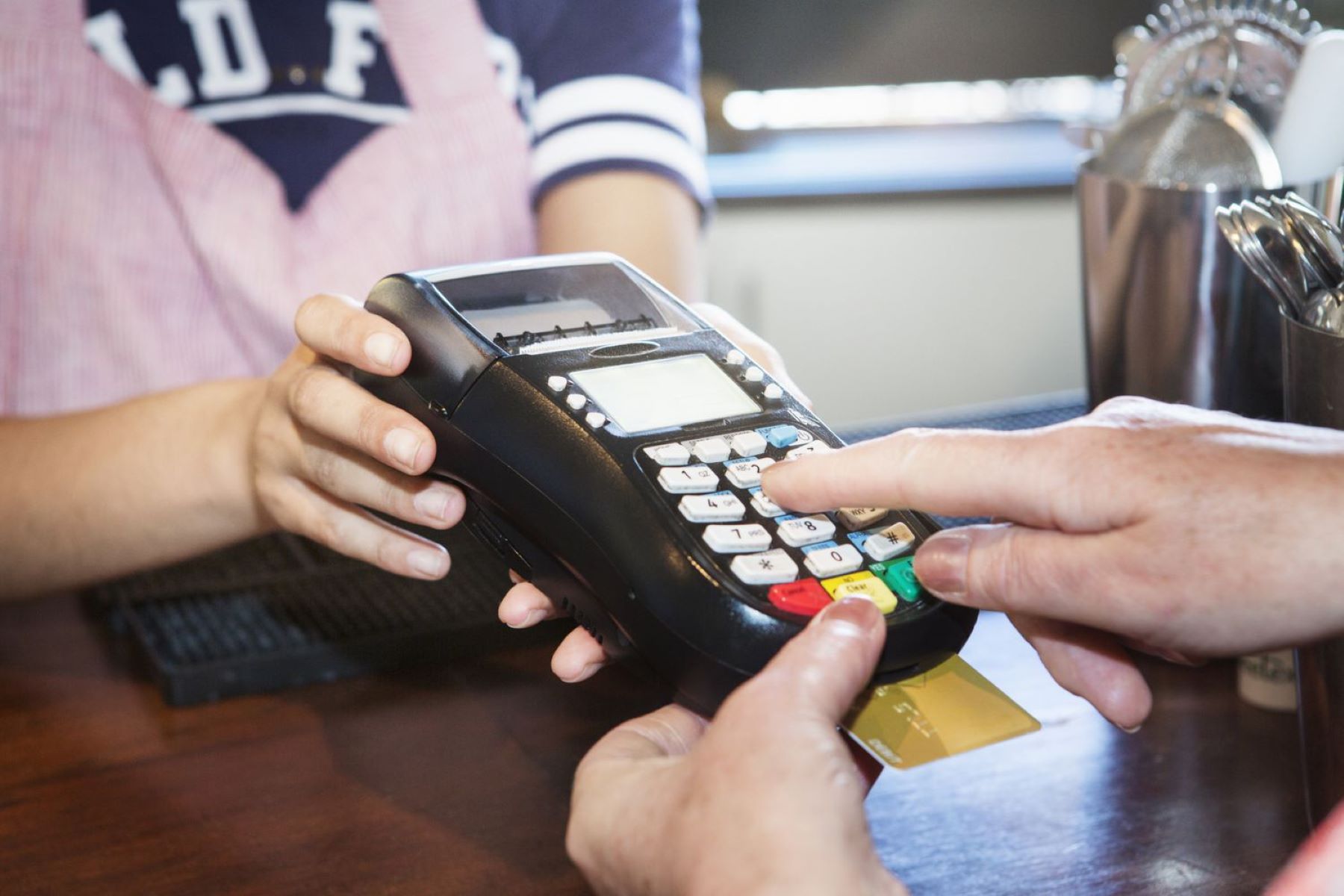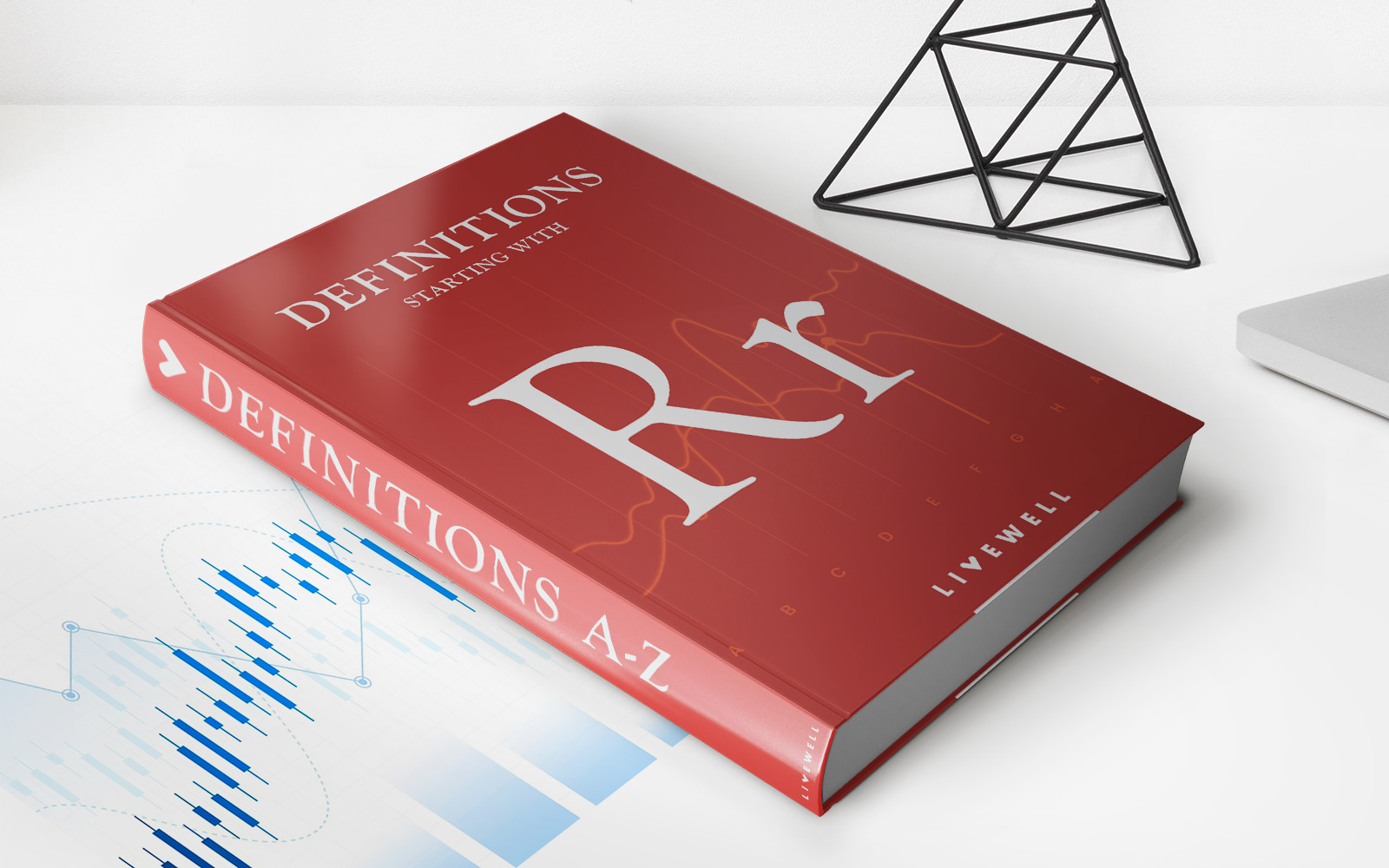

Finance
How Are Gift Cards Recorded In Accounting
Published: October 10, 2023
Discover how gift cards are accounted for in finance with our comprehensive guide. Learn the proper accounting treatment and recording methods.
(Many of the links in this article redirect to a specific reviewed product. Your purchase of these products through affiliate links helps to generate commission for LiveWell, at no extra cost. Learn more)
Table of Contents
- Introduction
- Definition of Gift Cards in Accounting
- Classification of Gift Cards
- Initial Recording of Gift Card Sales
- Treatment of Unredeemed Gift Cards
- Recognition of Revenue from Gift Cards
- Accounting for Redeemed Gift Cards
- Accounting for Additional Gifts with Gift Cards
- Reporting and Disclosure of Gift Cards
- Conclusion
Introduction
Gift cards have become a popular option for consumers to give and receive as presents. From birthdays to holidays, gift cards offer flexibility and choice, allowing recipients to select their preferred goods or services. While gift cards may seem straightforward from a consumer perspective, their accounting principles are more complex.
In accounting, gift cards are considered a liability for the company that sells them until they are redeemed. This is because the company has an obligation to honor the gift card and provide the corresponding goods or services. As such, it’s important for businesses to understand how gift cards should be properly recorded and reported in their financial statements.
In this article, we will delve into the various aspects of accounting for gift cards. We will explore how gift cards are classified, how they are initially recorded, and the treatment of unredeemed gift cards. Furthermore, we will examine the recognition of revenue from gift cards and how to account for additional gifts purchased using gift cards. Finally, we will touch on the reporting and disclosure requirements surrounding gift cards.
By the end of this article, you will have a comprehensive understanding of how gift cards are recorded in accounting and the implications for businesses that offer them.
Definition of Gift Cards in Accounting
Gift cards, also known as gift vouchers or gift certificates, are prepaid payment cards that can be used as an alternative form of currency to purchase goods or services from a specific retailer or business. From an accounting perspective, gift cards are considered a form of deferred revenue. This means that when a gift card is sold, the revenue is not immediately recognized as income because the company still has an obligation to provide goods or services in exchange for the gift card.
Gift cards can take physical form as a plastic card or virtual form as an electronic code, which can be emailed or digitally shared. They are typically offered for sale with a predetermined monetary value, allowing the recipient to choose items up to the value of the gift card.
It’s important to note that gift cards are distinct from store credit. While both represent prepaid funds, store credit is typically issued as a result of a return or exchange and is specific to the issuing retailer. Gift cards, on the other hand, are generally purchased by customers to be given as a gift to others.
From an accounting standpoint, gift cards represent an obligation on the part of the issuing company until they are redeemed. This is because the company has an obligation to honor the value of the gift card and provide the corresponding products or services. Until that obligation is fulfilled, the funds received from gift card sales are considered a liability on the company’s balance sheet.
Understanding the accounting treatment of gift cards is crucial for businesses that offer them, as proper recording and reporting are essential for accurate financial statements and compliance with accounting standards. In the following sections, we will explore how gift cards are classified, recorded, and recognized in accounting, shedding light on the intricacies of managing this unique form of deferred revenue.
Classification of Gift Cards
Gift cards can be classified into two main categories: closed-loop and open-loop gift cards.
Closed-loop gift cards: Closed-loop gift cards are specific to a particular retailer or business. They can only be used to make purchases within the issuing company’s stores or affiliated establishments. These gift cards are restricted to a limited network of locations and carry the brand identity of the issuing company. Closed-loop gift cards are typically sold directly by the issuing company and can be reloadable or non-reloadable.
Open-loop gift cards: Open-loop gift cards, also known as network-branded gift cards, carry the logo of a payment card network such as Visa, Mastercard, or American Express. These gift cards are more versatile, as they can be used at any merchant that accepts the payment network. Open-loop gift cards are often purchased through banks, financial institutions, or third-party vendors, making them widely available to consumers. They can also be reloadable or non-reloadable.
The classification of gift cards is important from an accounting standpoint, as it can impact the treatment of revenue recognition and the subsequent financial reporting requirements. Closed-loop gift cards are typically easier to account for, as the liability is limited to the issuing company’s stores or affiliated establishments. On the other hand, open-loop gift cards introduce an additional layer of complexity, as the liability extends to any merchant that accepts the payment network.
Regardless of the classification, businesses offering gift cards should implement clear policies for tracking and recording gift card transactions. This ensures accurate reporting of liabilities and revenue recognition when the gift cards are redeemed.
Now that we have explored the classification of gift cards, let’s move on to understanding the initial recording of gift card sales in accounting.
Initial Recording of Gift Card Sales
When a gift card is sold, the initial recording of the transaction involves the recognition of both a liability and revenue for the issuing company.
From an accounting standpoint, the funds received from gift card sales are considered a liability for the company until the gift card is redeemed. This is because the issuing company has an obligation to honor the value of the gift card and provide the corresponding goods or services to the recipient. The liability is recorded on the company’s balance sheet as “Deferred Revenue” or “Gift Card Liability.”
Simultaneously, revenue is recognized for the amount of the gift card sale. However, it is important to note that the revenue is not immediately recognized as income. Rather, it is recognized as a liability on the income statement, offsetting the deferred revenue recorded on the balance sheet.
For example, suppose a retail company sells a $100 gift card. Upon selling the gift card, the company would record a liability of $100 under “Deferred Revenue” or “Gift Card Liability” on the balance sheet. At the same time, $100 of revenue would be recognized on the income statement as a reduction of the liability. This process ensures the proper matching of revenue with the redemption of the gift card in the future.
It is worth mentioning that the specific accounting treatment for gift card sales might vary depending on the accounting standards followed by the company. Generally Accepted Accounting Principles (GAAP) and International Financial Reporting Standards (IFRS) provide guidance on the recognition and treatment of gift card sales. It is essential for businesses to adhere to the applicable accounting standards and consult with their accountants or financial advisors to ensure compliance.
Now that we have covered the initial recording of gift card sales, let’s move on to understanding the treatment of unredeemed gift cards and how they impact a company’s financial statements.
Treatment of Unredeemed Gift Cards
Unredeemed gift cards represent a unique challenge for businesses from an accounting perspective. While the funds from the sale of the gift cards are initially recorded as a liability, they remain on the company’s balance sheet until the gift cards are redeemed or expire.
The treatment of unredeemed gift cards depends on the applicable accounting standards and the company’s policy. Generally, there are two approaches for handling unredeemed gift cards:
1. Breakage Method: Under the breakage method, a portion of the unredeemed gift card balance is recognized as revenue over time based on historical redemption patterns. This approach acknowledges that not all gift card recipients will utilize the full value of their gift cards. The unredeemed portion, known as “breakage,” is gradually recognized as revenue. The specific recognition pattern may vary depending on factors such as the average redemption period or estimated breakage rate.
2. Gift Card Escheatment: Another approach for handling unredeemed gift cards is to recognize revenue from the unredeemed portion of the gift cards when the legal requirement for escheatment occurs. Escheatment refers to the process of transferring unclaimed funds, including unredeemed gift card balances, to the state government. The timing and requirements for gift card escheatment vary by jurisdiction, with some states considering gift cards as unclaimed property after a certain period of time.
It’s important for businesses to establish a clear policy and comply with applicable laws and regulations regarding unredeemed gift cards. This ensures accurate financial reporting and prevents potential legal issues.
From a financial statement perspective, the unredeemed gift card liability is classified as a current liability if the expected redemption period is within the next year. If the expected redemption period extends beyond one year, it is classified as a long-term liability. Proper classification and disclosure of this liability are important in providing transparent and accurate financial information to stakeholders.
Now that we have covered the treatment of unredeemed gift cards, let’s explore how the revenue from gift cards is recognized in accounting.
Recognition of Revenue from Gift Cards
The recognition of revenue from gift cards in accounting is closely tied to the redemption of the gift cards by customers. Generally, revenue from gift cards is recognized in the following scenarios:
1. Redemption of Gift Cards: When customers use their gift cards to make purchases, the revenue associated with those purchases is recognized. This revenue recognition follows the usual revenue recognition principles applied by the company. For example, if a customer redeems a $50 gift card for a product, the company will recognize $50 in revenue for that transaction.
2. Gift Card Breakage: As mentioned earlier, gift card breakage refers to the portion of unredeemed gift card balances that are gradually recognized as revenue over time. If the company follows the breakage method, revenue is recognized based on historical redemption patterns. This approach allows the company to recognize revenue from the unredeemed portion of gift cards.
Accounting standards, such as GAAP or IFRS, provide guidance on proper revenue recognition for gift cards. It is essential for companies to understand and follow these guidelines to ensure accurate financial reporting.
Additionally, it is crucial for businesses to establish policies regarding the recognition of revenue from gift cards. This includes determining the appropriate timing for revenue recognition and any specific conditions or limitations that may apply. Consistency in revenue recognition practices helps maintain the integrity and comparability of financial statements.
Proper reporting and disclosure of gift card revenue are essential. Companies should include clear and transparent information in their financial statements, including the amount of gift card revenue recognized, any breakage estimates, and the accounting principles followed.
Now that we have covered the recognition of revenue from gift cards, let’s move on to understanding how the redemption of gift cards is accounted for in the financial statements.
Accounting for Redeemed Gift Cards
When a customer redeems a gift card, the accounting for the transaction involves recognizing the redemption as a reduction of the liability on the balance sheet and recording the corresponding revenue on the income statement.
Let’s look at the accounting entries for the redemption of a gift card:
1. Liability Reduction: The redemption of a gift card decreases the liability recorded on the balance sheet for the unredeemed gift card balance. The specific account used to record this reduction depends on the company’s chart of accounts, but it is commonly referred to as “Gift Card Liability” or “Deferred Revenue.” The amount of the reduction is based on the value of the gift card redeemed by the customer.
2. Revenue Recognition: The revenue from the redemption of the gift card is recognized on the income statement. This revenue recognition follows the company’s usual revenue recognition principles. The amount recognized is the value of the gift card redeemed by the customer.
For example, if a customer redeems a $50 gift card for a purchase, the accounting entries would typically include a decrease in the “Gift Card Liability” or “Deferred Revenue” account of $50 and an increase in the revenue account of $50.
It’s important for businesses to promptly record the redemption of gift cards to maintain accurate financial statements. The timing of recording the redemption may vary depending on the company’s accounting policies and systems. Some companies may record redemptions as they occur, while others may have batch processes or periodic adjustments.
Additionally, it is important to track and reconcile the redemption of gift cards to ensure proper recording and reporting. This includes monitoring the overall liability for unredeemed gift card balances and ensuring that revenue from gift card redemptions is accurately captured.
Now that we have covered the accounting for redeemed gift cards, let’s explore how additional gifts purchased using gift cards are accounted for.
Accounting for Additional Gifts with Gift Cards
When customers use gift cards to purchase additional gifts or items beyond the value of the gift card, the accounting treatment involves recognizing the transaction as a combination of gift card redemption and a separate revenue transaction.
Let’s consider an example to understand the accounting for additional gifts purchased with gift cards:
Suppose a customer has a $100 gift card and decides to purchase a product worth $80 using the gift card. In this case, the accounting entries would involve:
1. Gift Card Redemption: The redemption of the gift card for $80 would result in a decrease in the “Gift Card Liability” or “Deferred Revenue” account on the balance sheet. This represents the portion of the gift card value that has been utilized.
2. Additional Revenue Recognition: The purchase of the product beyond the gift card value involves recognizing additional revenue. In this example, $80 in revenue would be recognized on the income statement as a separate transaction. This revenue represents the sale of the product to the customer.
This accounting treatment allows businesses to accurately track the utilization of gift card funds and separately recognize revenue from the additional purchases made with the gift cards.
In some cases, customers may also have to pay the difference in price if the value of the gift card is not sufficient to cover the full amount of the purchase. The payment for the difference would be recorded as a separate revenue transaction, similar to any other customer purchase.
It is important for businesses to have proper systems and controls in place to accurately track and record these types of transactions. This includes distinguishing between the portion of the transaction paid with the gift card and the portion paid with other forms of payment, such as cash or credit cards.
Now that we have covered the accounting for additional gifts purchased with gift cards, let’s move on to discussing the reporting and disclosure requirements for gift cards in financial statements.
Reporting and Disclosure of Gift Cards
Reporting and disclosure of gift cards in financial statements is an essential aspect of transparent and accurate financial reporting. It provides stakeholders with valuable information regarding the company’s gift card activity and its impact on financial performance. Here are some key considerations for reporting and disclosing gift cards:
1. Balance Sheet Presentation: The liability associated with unredeemed gift cards should be clearly presented on the balance sheet. It is typically classified as a current liability if the expected redemption period is within one year and as a long-term liability if the redemption period extends beyond one year.
2. Revenue Recognition: The revenue recognized from gift card sales and redemptions should be disclosed in the income statement or statement of comprehensive income. This demonstrates the financial impact of gift cards on the company’s revenue stream.
3. Breakage Estimates: If the company follows the breakage method for recognizing revenue from unredeemed gift cards, it is important to disclose the estimation technique and assumptions used to calculate the breakage. This helps provide transparency to stakeholders regarding the accounting policy for recognizing revenue from unredeemed gift cards.
4. Gift Card Liability Details: Disclosures should include relevant information about the gift card liability, such as the total amount outstanding, the average redemption period, any applicable escheatment laws, and the policies and practices for tracking and reconciling gift card balances.
5. Additional Disclosures: Depending on the jurisdiction and industry, there may be additional regulatory requirements or industry-specific guidelines for reporting and disclosing gift cards. Companies should ensure compliance with these requirements and provide any necessary disclosures to address specific regulations or guidelines.
Disclosure of gift card information in the footnotes to the financial statements enhances transparency and helps users of the financial statements understand the financial impact of gift cards on the company’s operations.
It is important for businesses to consult with their accountants or financial advisors to ensure proper reporting and disclosure of gift cards. Compliance with applicable accounting standards, such as GAAP or IFRS, is crucial for accurate and reliable financial reporting.
Now that we have covered reporting and disclosure of gift cards, let’s wrap up with a summary of key points.
Conclusion
Accounting for gift cards involves unique considerations and requires businesses to understand the appropriate treatment and reporting guidelines. Gift cards are recorded as liabilities until they are redeemed, with revenue recognized upon redemption or through the breakage method. Classification of gift cards as closed-loop or open-loop can impact the accounting treatment and reporting requirements.
Proper recognition and disclosure of gift cards in financial statements are essential for accurate and transparent reporting. Businesses must track and reconcile gift card activity, including unredeemed balances, breakage estimates, and any escheatment obligations. Disclosure of gift card liability and revenue details enhances transparency and helps stakeholders understand the financial impact of gift cards on the company’s operations.
Meeting the accounting standards, such as GAAP or IFRS, is crucial when accounting for gift cards. It is recommended for businesses to consult with their accountants or financial advisors to ensure compliance with the applicable guidelines and to establish clear policies for tracking, recording, and reporting gift card transactions.
By understanding the classification, initial recording, treatment of unredeemed gift cards, recognition of revenue, accounting for redeemed gift cards, and reporting requirements, businesses can effectively manage and report their gift card activity in a manner that adheres to accounting standards and provides transparency to stakeholders.
Gift cards continue to be a popular choice for consumers, offering convenience and flexibility. Proper accounting for gift cards not only ensures accurate financial reporting but also enhances the company’s reputation and instills trust in customers and investors.
In conclusion, businesses must recognize the intricate nature of gift card accounting and diligently adhere to accounting principles to accurately record, report, and disclose the financial aspects of gift cards. By doing so, companies can successfully navigate the complexities of gift card transactions while providing reliable financial information to stakeholders.














